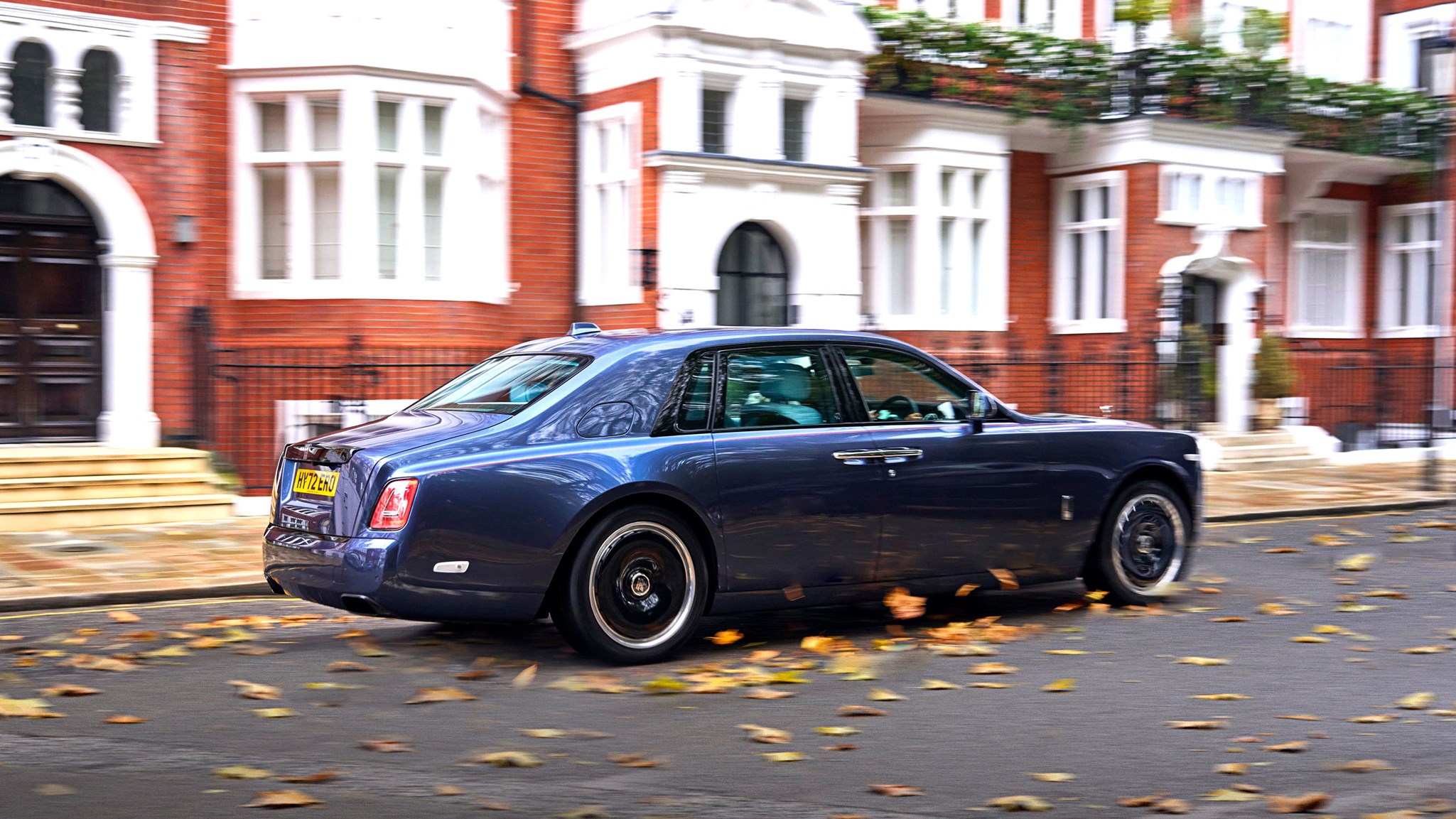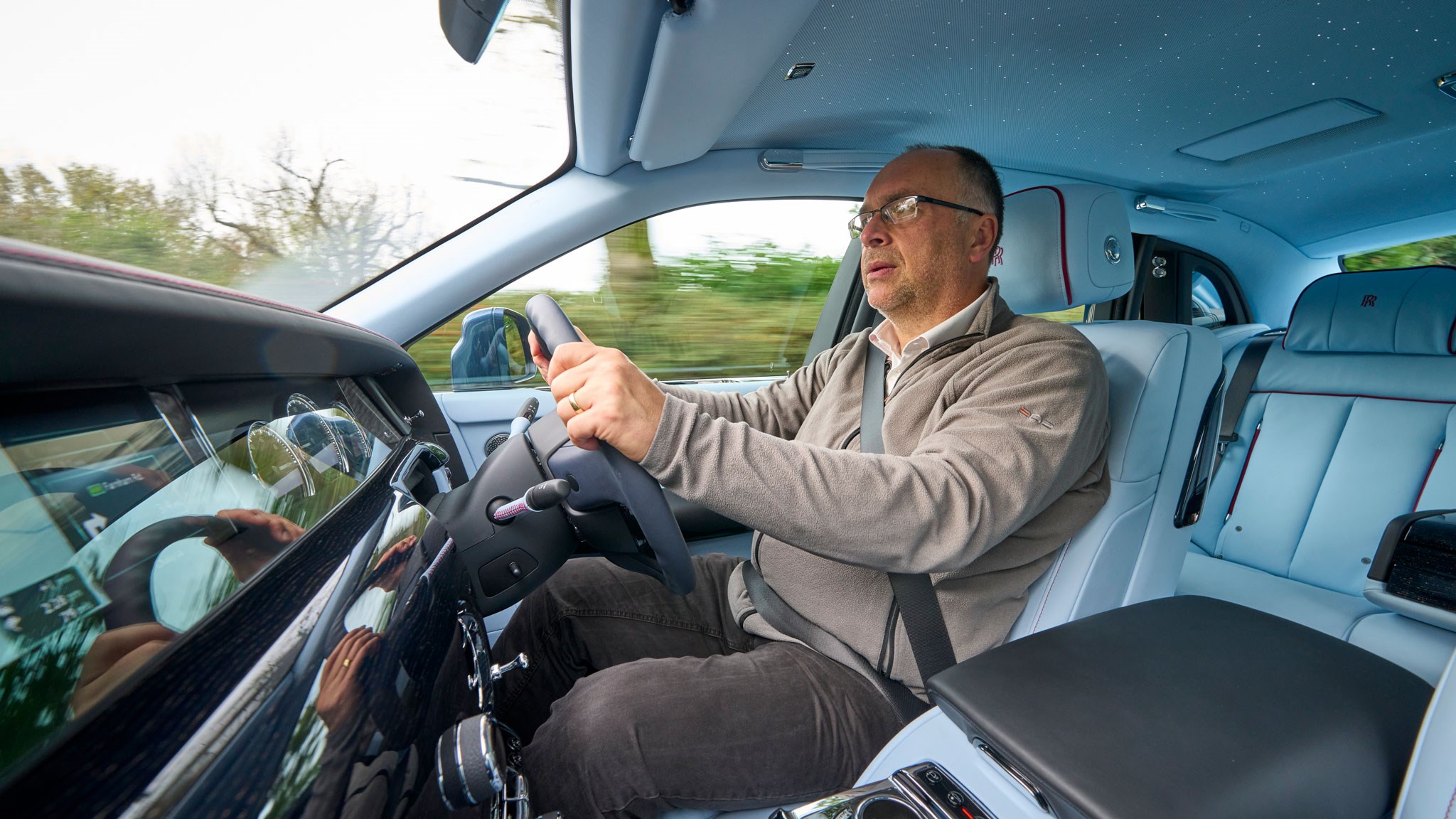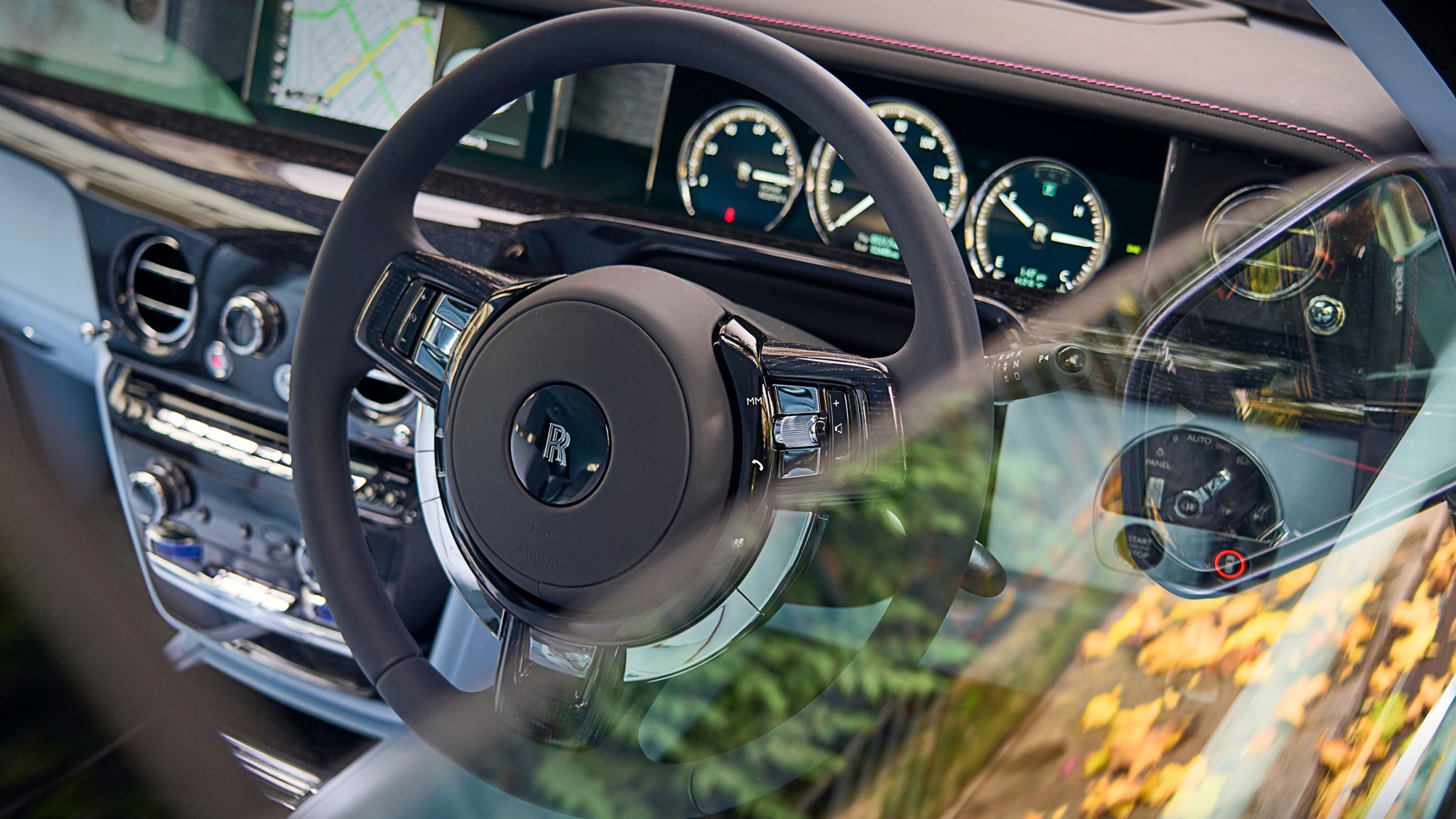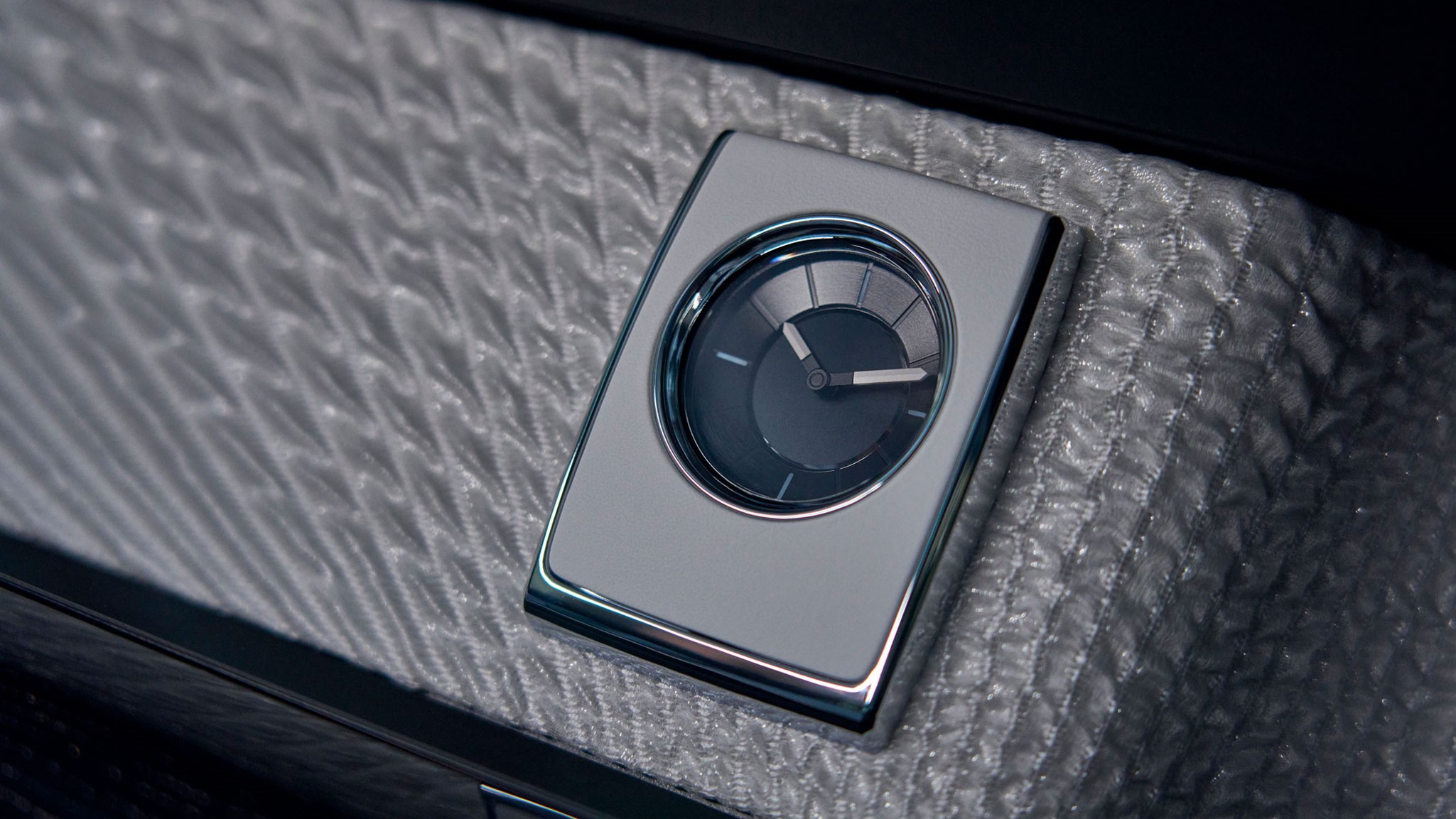► Refreshed version of limo
► Last upgrade before switch to electric
► Tiny changes, huge scope for personalisation
The cornerstone of today’s Rolls-Royce was the first Goodwood Phantom, 2003’s MkVII. That car showed BMW understood what was required of a 21st century limo, with its mix of traditional and modern. It was the biggest leap the company had ever made since its foundation almost a century earlier.
This car, the Series II (ie facelifted) version of 2017’s Phantom MkVIII, is the smallest leap imaginable. Even by the modest standards of midlife facelifts, it’s unambitious. But there was no need to change. The waiting lists are long, despite the typical cost of a made-to-order Phantom being more than £400,000, and the MkVIII a significant advance on the MkVII.
Unlike most updates, it’s not driven by the need to stay ahead of the competition – because really there is no competition. Limos from Bentley, BMW, Mercedes and Audi are all significantly cheaper, and not really aiming for the same level of opulence. In any case, the average Rolls buyer owns around eight cars, and two homes, and a business. If they fancy another car, chances are they’ll have it as well as the Rolls, not instead of it. These are people who, in many cases, spend millions on yachts, and even private jets.
But Rolls-Royce doesn’t like to take its customers for granted; it aims to operate like a luxury-goods company, not a car company, which means listening attentively to microscopic shifts in their tastes, making the buying and owning experience as smooth as possible, and offering huge scope for personalisation.

What’s changed?
The changes are very few. The steering wheel retains its large diameter but gains a little thickness to its rim – although by modern standards, it’s still on the thin side.
There are some new alloy wheel designs, including a near-solid disc that harks back to Rolls-Royces from the 1920s. The headlights are slightly reshaped, and the grille re-angled.
Put a pre-facelift car next to the new one and you can see the difference, but it’s ultimately negligible. Perhaps the biggest change is invisible. It’s the Rolls-Royce Connected feature, which links to the owners-only Whispers app and makes it easy to check remotely on the car’s status and book a service, or indeed book a table at a restaurant, and get the nav to plot your route.
Where does it sit in the line-up?
The current Rolls-Royce line-up is simpler than it’s been for a few years. There are two saloons: the Phantom and the slightly smaller Ghost. There’s the Cullinan, the SUV. The Phantom and Ghost are available with regular or long wheelbase. The Ghost and Cullinan are offered in standard or Black Badge form, which involves some visual darkening and some slightly more sporting dynamic treatment.
The Wraith and Dawn are on their way out. The Phantom Coupe and Phantom Drophead Coupe are no more.
The first all-electric production Rolls-Royce, the Spectre, was revealed in the autumn of 2022 and will reach its first buyers in late 2023 if all goes to plan. By the end of 2030, Rolls-Royce will be producing only all-electric cars, with today’s models set to be replaced one by one by equivalent EVs. The V12 engine will continue to the end, getting tweaked if necessary to meet emissions regulations, but not going hybrid.

What’s it like to drive?
Drive a Ghost and it’s easy to find yourself being pleasantly surprised by how manageable it is, while simultaneously thinking that you really wouldn’t want anything bigger. But then you drive a Phantom and much the same happens again: you’re suprised and relieved by the way its measurable dimensions are not reflected in its subjective size.
How is this possible? Partly it’s because you get a commanding view out through the substantial windows, with the seat set high, so you always have a good idea of where the corners of the car are. Partly it’s the all-wheel steering, which at low speeds turns the rear wheels in the opposite direction to the fronts, which has the same effect as reducing the wheelbase, thus tightening the turning circle.
Also, people who drive Phantoms regularly have told us that other road users tend to give the Rolls a wide berth. Whether that’s so they can hold back and admire it fully, or because they’re worried about the effect on their insurance premium if they get too close, only they know.
The 6.75-litre twin-turbo V12 engine – based on a BMW unit, but set up specially for the Phantom – has huge amounts of power and torque: 563bhp and 664lb ft respectively. But don’t go looking for supercar levels of performace, which would be unlikely in something so big and heavy even if it were desirable. Instead, it’s set up for breezing about, the engine barely audible and totally unstressed.

If you do give the long-travel accelerator pedal a work-out, the eight-speed automatic transmission goes down a couple of ratios, the Phantom’s nose rises, the engine becomes easier to hear and you make incongruously swift progress towards the horizon.
The brakes – controlled by a similarly long-travel pedal – are more than up to the job, going about their business with no drama but plenty of power. And the adaptive air suspension generally does a very good job of smoothing out the road surface without letting the car wallow around.
The driving experience is highly traditional: what you feel, what you see, what you’re asked to do – it’s all a gently evolved version of the Rolls experience dating back decades. Yes, there’s a version of the BMW iDrive information screen controller, but most of the on-the-move adjustments you’ll need to make involve physical buttons, switches and levers. It’s all very straightforward.
It’s also very un-SUV. The weight distribution and suspension travel are classic saloon, not 4×4. And the fact that there’s a physical divide between the passenger compartment and the boot reduces the boominess you can get in big SUVs, even ones as refined as the Cullinan.
And in the back?
Your correspondent had the unusual privilege of riding in the back of a BMW 7-series two days after riding in the back of a Phantom. Both give rear-seat passengers plenty of control over their own environment, in terms of temperature and entertainment, although the Rolls-Royce does it with bigger, posher knobs. Both allow useful amounts of seat adjustment, although the Rolls is much plusher and more lounge-like. And your correspondent slept well in both.
What versions are available?
There are two wheelbases, the regular (3552mm, overall length 5762mm), which we have driven, and the extended (3772mm, 5982mm). The extra length goes largely into the rear passenger area, adding space that very few people would be big enough to actually need, but some might like. It also adds weight and dents the performance slightly.
To put it in context, your standard Ford Transit has a wheelbase of 3300mm and overall length of 5531mm.
There are no trim levels, like you get with just about every other car. But there are near-infinite opportunities for personalisation, limited by your imagination and the depth of your pockets. There are thousands of colour combinations to choose from (or you can go completely bespoke), with brighter colours and starker contrasts becoming more common as the average age of a Rolls-Royce owner continues to drop (it’s currently 42; the youngest of any BMW Group brand).
Leather and wood is still the default for the interior, and the Series II carries over the Gallery feature from the 2017 car – the chunk of dashboard ahead of the front passenger, where an artwork of your choosing can be fitted before glass. And the use of LEDs to create a slightly cheesy ‘night sky’ effect above your head remains too. You want a drinks cabinet? Child seats in the same leather as your seats? Thicker carpet? Anything is possible.

Verdict
The analogy with economy class, business class and first class on an aeroplane holds good. If economy is a VW Golf, business is a Mercedes E-Class and the Phantom is first, all are very good, and all will get you to your destination at the same time. You’ll spend a lot more on the Phantom, be better looked after, and stand a good chance of arriving feeling far more refreshed.
Yes, you may encounter some envy, and you may find yourself questioning how much sense any of this makes when there’s a cost of living crisis and a climate crisis. But then you settle down in those glorious seats, press the starter button and waft away from such concerns…
All our Rolls-Royce reviews